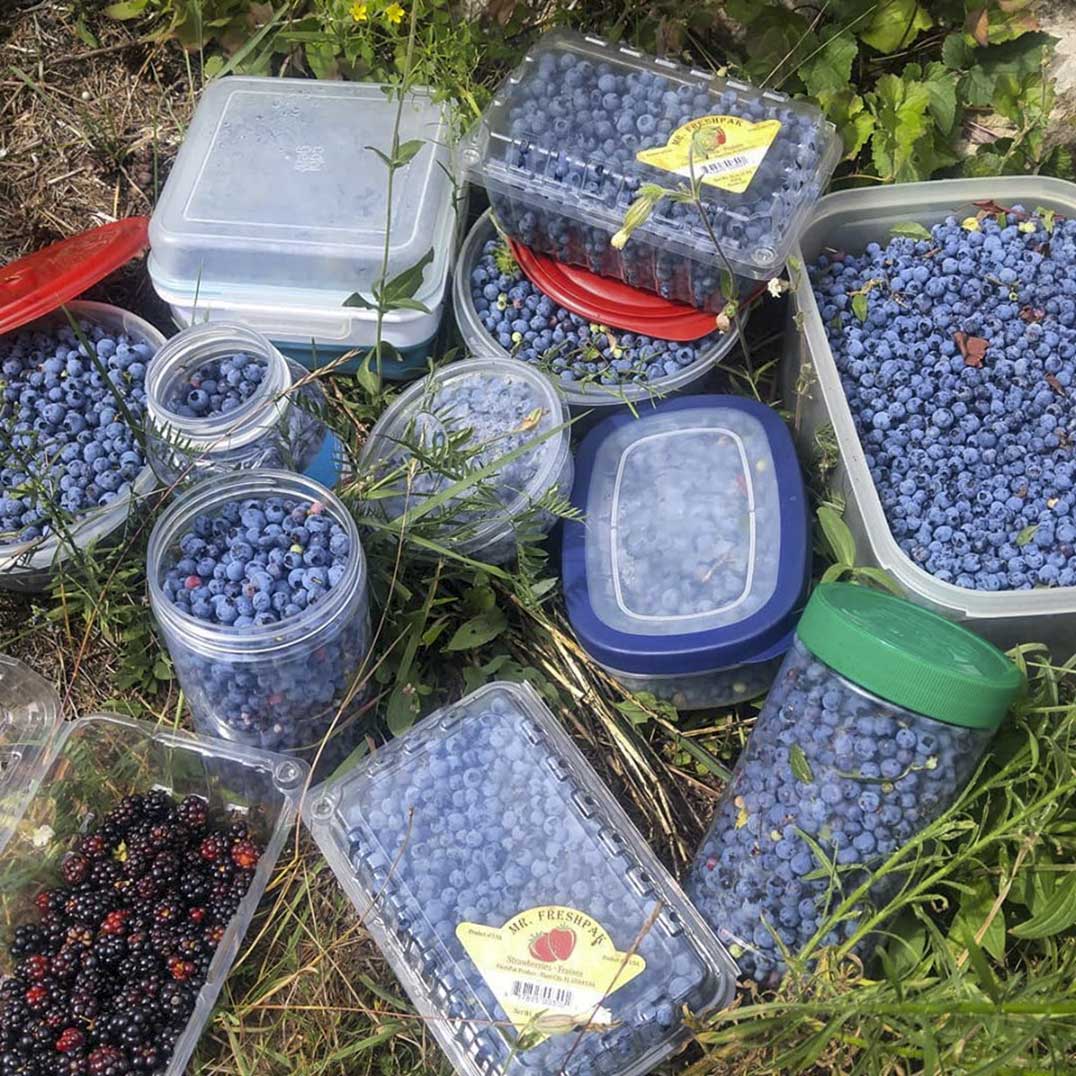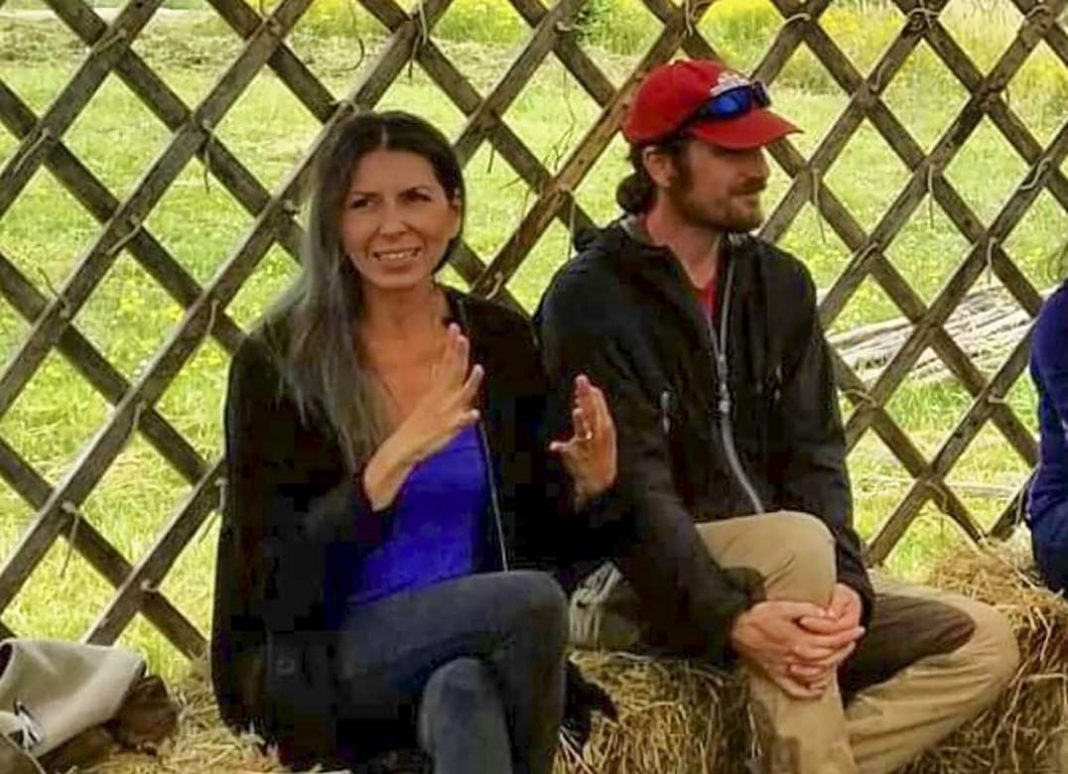Freezer failure, favourable foraging, family fortitude and a French feature
EDITOR’S NOTE: The Expositor will be checking in regularly with this couple who have ties to Manitoulin Island as they embark on their Big Wild Year challenge. This is the eighth update since they began.
NORTH BAY – Jeremy St. Onge and Delphanie Colyer are still pushing hard toward their challenge goal of surviving for an entire year solely off of local foods they have foraged, hunted or otherwise obtained, with August providing the obstacle of a broken freezer and the boon of impressive hauls to grow their stockpiles as the winter creeps ever closer.
“This time of the year, we’re torn because there’s so many events we want to get to. We’re hoping to go to Minnesota to pick hickory nuts,” said Ms. Colyer.
Mr. St. Onge, an environmental studies professor at Canadore College, and Ms Colyer, a nurse who is originally from Wiikwemkoong, have dubbed 2019 their ‘Big Wild Year.’ For the entirety of the year, they will only be eating foods that occur naturally in the environment. They are not growing anything for the challenge and have made some allowances for purchasing wild foods such as wild-caught salmon and smoked whitefish from the waters off Manitoulin Island.
The month started with a trip to Manitoulin Island for two family reunions on Ms. Colyer’s side. Her son successfully went fishing in Wiikwemkoong and the couple returned with a gifted bag of moose meat from Ms. Colyer’s cousin.
Mr. St. Onge spent some time at his family’s camp in Quebec and did some fishing of his own, reeling in some walleye and lake trout.
“I’ve mostly been picking a lot of blueberries. It’s a berry bumper crop this year. We’ve been picking blueberries, blackberries, pin cherries and chokecherries,” he said, adding that he discovered a motherlode blueberry patch while on a bike ride with his kids near their house. The couple has picked well over a dozen litres of blueberries this season.
“We’ve started getting some apples recently,” began Mr. St. Onge, before Ms. Colyer jumped in.
“I ate so many apples. I’m just so happy, it was so good to crunch into something,” she said.
“Something fresh,” added Mr. St. Onge. “Not cooked or frozen. It’s still early so they haven’t developed their sweetness yet, but I canned a pot of applesauce and ate it all over a period of two days.”
They attended an eco-fair at Foxfire Heritage Farm near Powassan that discussed the area’s heritage, farming, watershed protection and other environmental topics. They were asked to talk about their experiences through 2019.
Mr. St. Onge picked chokecherries for the first time this past month and made a juice, but found it quite astringent.

A new food for August was a groundhog that was causing a nuisance at a garden and was trapped by Ms. Colyer. They oven-roasted it and found it rather tasty. There was also a second, larger groundhog there of about 10 to 12 pounds, but it was too fat to fit in their trap so Ms. Colyer will be returning with a racoon-sized trap.
They almost tried a muskrat, but Ms. Colyer unfortunately was unable to identify whether it was a conventional rat or a muskrat before it scurried away.
Although the couple did not secure any moose or elk tags, they did get two antlerless doe tags and Ms. Colyer is allowed to hunt on her traditional territory.
Bears have made an appearance at their bush property but the main sightings have been a sow and two cubs. Mr. St. Onge said he was waiting for a larger, loner bear to come along. That season extends until October.
“My kids have all been great about encouraging me. They’re always saying ‘mom, you’re doing so well with your wild food challenge!’” said Ms. Colyer.
The kids have joined them on foraging walks, her eldest son Jack has taken a liking to fishing and her son Declan has expressed interest in following a similar diet when he’s older.
The couple enjoyed a weekend off from foraging at their camp and Jack was able to try some of the fish he had caught.
A friend of Ms. Colyer’s messaged her and asked if she had any interest in a frozen spring crane. In addition to their recent flurry of media attention from the likes of CTV and radio stations, someone with TFO in Sudbury contacted Mr. St. Onge to ask if the couple would be interested in cooking something ‘odd’ for a television special. They decided to save the crane due to its somewhat unusual nature, along with some of the blackbirds from earlier this year (they never did manage to nab four and 20 blackbirds, unfortunately).
Goose and duck season will be opening shortly and will provide further freezer stocking materials for the pair. That is, if their freezers hold out.
“Jer’s freezer died this month,” said Ms. Colyer. “Losing a freezer full of foraged food would probably be the definition of the worst. It caused a bit of heart palpitation.”
“Luckily, I caught it before anything thawed. I use a freezer at my parents’ too, so my supplies are all spread out. No one calamity can knock it all out,” said Mr. St. Onge with a laugh.
That crisis came with a hidden benefit: All of the assorted odds and ends that settled to the bottom of the freezer were brought to the top during the change-over. They have enjoyed making creative meals out of items such as bear kidneys this past month.
As for the fall, both seem excited about the prospect of cooler days ahead.
“It’s my favourite time of year,” said Mr. St. Onge.
“It’s just so great. The weather is nice, there’s no bugs and everywhere you go there’s food. There’s hunting, the birds even sound different—it’s going to be great,” added Ms. Colyer.
The two will be speaking at an event in Little Britain (near Lindsay) in mid-September. They spoke last year about their predictions for the Big Wild Year, so Ms. Colyer said she was looking forward to comparing and contrasting what has proven true and incorrect from the initial estimates. She laughed at their predictions of using 20 litres of syrup in a year, when in reality that amount was four times larger.
They are also discussing taking part in a Wiikwemkoong community harvest event through Canadore College and hosted by Gerard Peltier.
“Things should switch up in September. We’ll be into root picking, hunting quite a bit more and getting mushrooms because those have been late starting,” said Mr. St. Onge.
“We always try to layer up so if we’re going in the canoe to shoot geese or ducks, we pick spots where we can get cranberries, alder catkins, Labrador tea, chokecherries or sweetferns. That way, even if we don’t shoot anything, we can come back with a canoe full of other things,” said Ms. Colyer.
To follow Ms. Colyer and Mr. St. Onge’s Big Wild Year, you can view their updates at Facebook.com/BigWildYear. The Expositor will be checking back with the two throughout the year to share their experiences in this unique endeavour.





